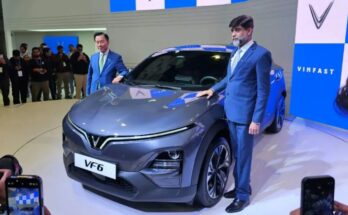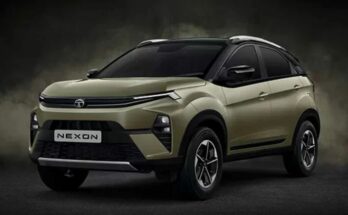India and Pakistan won their independence from the British Raj in 1947, but today in terms of education & research, industrialization, tech, economy & growth, the two countries stand poles apart from each other. The same holds true for the automobile sector of both countries.
Related: Elon Musk of Tesla Eyes Significant India Investments After Meeting Modi
The contrasting difference between the Indian and Pakistani automobile industries can be attributed to various historical, economic, regulatory, and demographic factors. Here are some key reasons for the differences:
- Market Size and Population: India has a significantly larger population than Pakistan, making it a more attractive market for automakers. The larger customer base in India provides economies of scale and encourages automakers to invest in manufacturing and marketing in India. Though Pakistan is also the 6th most populous country in the world, the vehicle ownership ratio remains alarmingly low.
- Economic Differences: India has a larger and more diverse economy compared to Pakistan. India’s economy is characterized by greater economic activity, higher income levels, and a larger middle class. This leads to higher purchasing power and demand for a wider range of vehicles.
- Manufacturing vs. Assembly: India has a well-established automotive manufacturing and assembly industry, with numerous domestic and international automakers setting up production facilities in the country. Pakistan, on the other hand, has merely some assembly units while true vehicle production, R&D, and exports are next to nothing. Historically Pakistan has faced challenges in attracting significant automotive manufacturing investments, particularly after the Nationalization program of 1972 that badly deteriorated investor confidence.
- Regulatory Environment: Regulatory policies and import tariffs in India and Pakistan differ significantly. India has, at times, introduced policies to promote the automotive sector, while Pakistan has had protectionist policies that favor a few businesses without any focus on the improvement & development of the country’s industry as a whole. Plus, stricter import regulations and higher duties, also affect the affordability and availability of vehicles.
- Consumer Preferences: Consumer preferences and the types of vehicles in demand may vary between the two countries. In India, there is a higher demand for a wide range of vehicle types, including small cars, SUVs, and two-wheelers. In Pakistan, smaller cars and economical options are more popular.
- Foreign Investment: India has generally been more successful in attracting foreign automakers and investments, leading to a more competitive market with a wider choice of vehicles. Pakistan has faced challenges in this regard.
- Infrastructure: The availability and condition of road infrastructure also influence the types of vehicles demanded in each market. India has been investing in road infrastructure development, which stimulates the demand for automobiles. In Pakistan, infrastructure is not that developed compared to India.
- Local Manufacturing: India has a more established local manufacturing and parts supply ecosystem, which leads to lower production costs and, in turn, more affordable vehicles for consumers. Pakistan purely imports CKD parts in bulk and assembles them locally, whereas whatever localization is achieved is based on a number of non-technical parts that have no significant effect on the value chain.
- Government Policies: Government policies related to emissions, safety standards, and incentives for electric vehicles greatly vary between the two countries, impacting the types of vehicles available and their cost. India currently enforces Euro 6 (Bharat-6 Phase-2) emission standards whereas already embraced electric vehicles. Pakistan is yet to advance from Euro-2 emission standards.
- Cultural and Societal Factors: Cultural and societal factors also influence car ownership and preferences. For example, family size and commuting patterns impact the choice of vehicle in each market. India has a good number of MPVs, and compact SUVs available. In Pakistan, such vehicles are limited to the rich & affluent only.
- Global Automaker Presence: India has attracted a wider range of global automakers, which has resulted in a more diverse and competitive market. Pakistan has a very limited number of players who offer very little to choose from.
- Fierce Competition: Competition is a fundamental driver of economic growth, innovation, and improved living standards. It encourages businesses to continually improve and adapt to changing conditions, benefiting both consumers and society as a whole. While the Indian market is a highly competitive one, the Pakistani car market is more of an oligopolistic one, that has been severely protected ever since with hardly any example of healthy competition between players.
It’s important to note that both markets have their unique challenges and opportunities, and they can evolve over time. While Indian automobile industry which has surpassed Japan to secure the 3rd place in global automotive sales, has already achieved a lot in recent years. Compared to this, the Pakistani automobile market remains in its infancy requiring all sorts of govt support and incentives to date, but is yet unable to meet the small demand of up to 200k vehicles a year.
Related: Why is Pakistan Still a Sub-250K Vehicle Market?
The government can play a crucial role in uplifting Pakistan’s auto industry through a combination of policy measures and strategic initiatives. By taking such steps and maintaining a supportive and stable business environment, the government can contribute to the growth, competitiveness, and sustainability of Pakistan’s auto industry. This, in turn, can lead to increased employment, economic development, and technological advancement in the country.

I don’t eat, sleep or dream of cars, I am just someone who loves to see, think & write about cars. I love Ferrari in Pink but they won’t make one for me. I use X to write my full name, but that doesn’t mean I’m inspired by Altis X, in fact, my dad hates it 😀 Btw I’m an occasional writer so don’t expect too much from me 🙂




